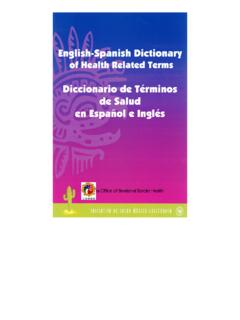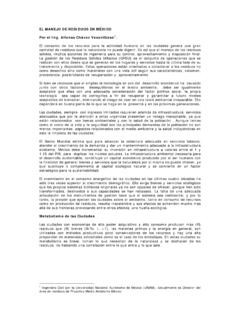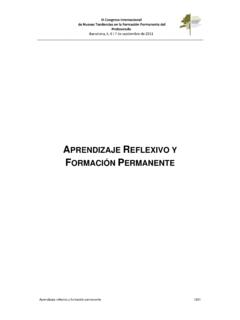Transcription of Program Guidebook
1 Program Guidebook Illinois Adjustable Block Program Updated December 10, 2021 to reflect new requirements from Public Act 102-0662. Adjustable Block Program Guidebook December 10, 2021. Program Guidebook Adjustable Block Program Table of Contents Introduction .. 4. Section 1: Adjustable Block Program Description .. 5. A. Block 6. B. Block Closing .. 10. C. Waitlist 10. D. REC Pricing .. 12. E. Traditional Community Solar .. 15. F. Community-Driven Community Solar .. 17. G. Public 18. H. Equity Eligible Contractors .. 19. Section 2: Approved Vendors .. 20. A. List of information collected in Approved Vendor Application .. 21. B. Equity Eligible Contractor Application .. 25. C. General AV Attestation and EEC Certification .. 26. D. Evaluation Criteria .. 30. E. Application Review and Appeal Procedure .. 32. F. Confidentiality.
2 33. G. Designee Registration .. 34. Section 3: Marketing Guidelines and Consumer 38. A. Illinois Shines .. 38. B. Customer Service and Consumer 38. C. Violation of Consumer Protections, Marketing Guidelines, or other Program Requirements .. 39. D. Disciplinary Action .. 40. E. Disciplinary Determinations .. 42. Page 1 of 102. Adjustable Block Program Guidebook December 10, 2021. Section 4: System Eligibility .. 44. A. System Location .. 44. B. Interconnection Date .. 44. C. New Equipment .. 44. D. Installer 44. E. Expansions .. 46. F. Co-location of Distributed Generation Projects .. 47. G. Co-location of Community Solar Projects .. 47. H. Site Control .. 49. I. Site 50. J. REC Quantity Calculation .. 50. K. System Size .. 52. L. Systems with Battery 52. M. Systems that Directly Serve DC Loads .. 52. N. Metering .. 53. O. Partial 54.
3 P. Rate Recovery .. 54. Q. Prevailing Wage Requirements .. 55. Section 5: Project 58. A. Part I Application Process .. 58. B. Part II Application Process .. 67. C. 69. D. Energized Systems .. 69. E. Community Solar Additional Requirements .. 70. F. Required Information .. 73. Section 6: Renewable Energy Credit Management and Assignments .. 82. A. REC Delivery .. 82. B. Assignment of REC 84. Page 2 of 102. Adjustable Block Program Guidebook December 10, 2021. Section 7: Annual Reports and Performance Evaluation .. 88. A. Annual Report Requirements .. 88. B. Collateral and Performance Evaluation 89. Section 8: Invoicing and Payments .. 92. Section 9: Guidebook Update Process .. 96. Section 10: Glossary .. 97. Page 3 of 102. Adjustable Block Program Guidebook December 10, 2021. Introduction The Adjustable Block Program is a state-administered solar incentive Program created to facilitate the development of new photovoltaic distributed generation and community solar projects through the issuance of renewable energy credit delivery contracts, as required by Illinois law.
4 The Adjustable Block Program Guidebook is a document created by the Adjustable Block Program Administrator to provide existing and prospective Program participants with necessary guidance about application requirements, participation requirements, Program processes, and other aspects of the Adjustable Block Program . The Program Guidebook works in conjunction with the Illinois Power Agency's Revised Long-Term Renewable Resources Procurement Plan to outline Program requirements for Approved Vendors and their subcontractors. The Program Guidebook is reviewed and updated on periodic basis by the Adjustable Block Program Administrator, InClime, Inc., in consultation with the Illinois Power Agency ( IPA or Agency ). Any omission of content from a prior version of this Guidebook through an update may not necessarily constitute the omission of a requirement, as some edits are made for cosmetic or synthesizing purposes and not to reflect the removal of a requirement.
5 More information on the update process of this document can be found in Section 9: Guidebook Update Process. The Agency and Program Administrator will update the Guidebook periodically as necessary to reflect changes in law and/or orders of the Illinois Commerce Commission ( Commission ) which impact the Adjustable Block Program ( ABP or Program ), or the development of other requirements through separate comment and requirement publishing processes. In the event of a conflict between this Guidebook and subsequent changes in law, new Commission orders, or the development of other Program materials, those statutes and orders shall supersede the relevant portions of this Guidebook until such time as Guidebook revisions may be completed. This December 10, 2021 edition of the Guidebook incorporates changes required through the enactment of Public Act 102-0662 (known colloquially as the Climate and Equitable Jobs Act or CEJA ) as well as other Program updates and clarifications.
6 Key statutory changes include, but are not limited to: Changes to the sizes applicable to Small and Large Distributed Generation categories New Program categories for projects located at public schools, community-driven community solar projects, and projects from Equity Eligible Contractors New block capacity allocations New REC prices Prevailing wage requirements for applicable projects New REC Delivery Contracts Page 4 of 102. Adjustable Block Program Guidebook December 10, 2021. These changes will be applicable to the Adjustable Block Program when it reopens for new project applications on December 14, 2021. This Guidebook contains updates to requirements regarding marketing guidelines and consumer protections. Any such changes in this Guidebook shall govern until these updates have been reflected in updated versions of the Distributed Generation Marketing Guidelines and Community Solar Marketing Guidelines documents.
7 Section 1: Adjustable Block Program Description A complete description of the Program can be found in the Agency's Revised Long-Term Renewable Resources Procurement Plan ( Plan, Long-Term Plan, or Revised Plan ). 1 This Guidebook also reflects changes to the Program that were proscribed through the enactment of Public Act 102-0662. that have not yet been adopted in the Long-Term Plan. The Agency expects that the next Long-Term Plan will be approved in July 2022 and future editions of this Guidebook will reflect changes to the Program that are adopted through that Plan. This Section of this Guidebook contains a summary of the Program designed for quick reference;. subsequent sections elaborate on various aspects of the Program , including further guidelines not found in the Plan. A glossary in Section 10 of this Guidebook provides a description of key terms used throughout.
8 The ABP provides incentives for the development of new photovoltaic distributed generation ( DG ). and community solar projects located in Illinois. These incentives are provided through payments made for the Renewable Energy Credits ( RECs ) generated by participating projects over their first 15 or 20 years of operation, dependent upon the application category as described further herein. These payments are made through contracts between Illinois electric utilities and Approved Vendors (as described below). The ABP is administered pursuant to Section 1-75(c) of the IPA Act (20 ILCS 3855). The Illinois Power Agency is the state agency responsible for the Program 's general management and implementation. Day to day administration of the Program is the responsibility of the Agency's third-party Adjustable Block Program Administrator, InClime, Inc.
9 1 The most recent version of the Plan can be found here: This Plan was originally approved by the Illinois Commerce Commission in Docket No. 19-0995 on February 18, 2020 and published by the IPA on April 18, 2020. It superseded the Agency's Initial Long-Term Renewable Resources Procurement Plan which was approved and published in 2018. The Revised Plan was subsequently updated and re-published in June 2021 to reflect the Illinois Commerce Commission's approval on reopening of changes made to provide for the handling of potential RPS budget shortfalls (an issue now rendered moot through Public Act 102-0662). Page 5 of 102. Adjustable Block Program Guidebook December 10, 2021. In addition to the approval of the Agency's Plan and the approval of REC Contracts, many other aspects of photovoltaic development and installation in Illinois are under the jurisdiction of the Illinois Commerce Commission.
10 These include the certification of distributed generation installers, interconnection standards, net metering tariffs, and tariffs allowing for a smart inverter rebate for non-residential PV systems. A. Block Structure The core of the Adjustable Block Program is the concept of a block. A block constitutes a pre- established amount of Program capacity available for a certain project type at a transparent, administratively set REC price or prices, with prices differing slightly depending on project attributes. Blocks are intended to create a progression from one price level to another based on the response of the market. A strong response from the market will result in a rapid progression to a lower price level, for example, while a weak response could elicit an increase in incentives if necessary, to facilitate market growth.












